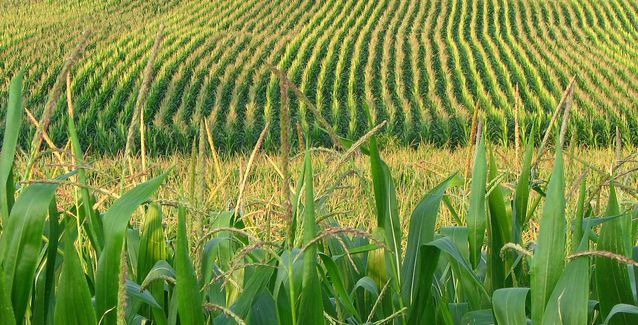Corn crop quality lower nationwide; Arkansas crop outperforming
by August 21, 2023 11:11 am 685 views

At 94 million projected acres, the U.S. corn crop is on pace to be the third largest since 1944, but the quality of the crop could be a different matter. Extreme heat and drought-like conditions have plagued corn farmers in several parts of the country including the Midwest.
Despite the overall conditions, the Arkansas corn crop is outperforming its counterparts in several states.
The U.S. Department of Agriculture has been tracking 14,000 growers and consultants across the country since mid-May and will continue to track them through the end of harvest in November. U.S. growers reported about 57% of their corn crop as “good to excellent” condition. While this approximately ties the reported condition of corn crops in 2019 and 2022, it’s significantly lower than conditions reported in early August of 2018 (about 72% ), 2020 (also about 72%) and 2021 (about 64%).
The USDA report is weighted toward growers in Midwestern states, with more than 1,000 respondents in Kansas and nearly 1,000 in Texas (297 respondents, by comparison, are located in Arkansas).
According to the USDA’s Arkansas-specific Crop Progress and Condition Report published Aug. 14, growers reported 69% of corn acres as being in “good” or “excellent” condition. Arkansas corn farmers were projected at the start of the growing season to increase acreage by about 14%, going from 710,000 total acres in 2022 to 810,000 acres in 2023.
Jason Kelley, extension wheat and feed grains agronomist for the University of Arkansas System Division of Agriculture, said the improving condition in Arkansas corn was largely driven by early summer rainfall.
“From the end of May through the end of June, the weather was dry, both here and in the Midwest, so the percentage of the crop rated good-to-excellent was lower than it normally has been during that time of year,” Kelley said. “But then it started raining.”
Throughout most of July, large swaths of Arkansas experienced nearly clockwork-like rains of several inches each week. While some areas of the state, especially the southwestern corner, received an overabundance, most of Arkansas’ approximately 800,000 acres of corn benefitted, Kelley said.
“Once we got to the more important stages, like pollination and grain fill, it was still warm, but we were getting more timely rains than we have the past couple of years,” he said. “That’s been very helpful. A 2-inch rain is so much more beneficial than a 2-inch irrigation.”
Hunter Biram, extension agricultural economist for the Division of Agriculture, said the condition of a crop at any given moment in time doesn’t necessarily predict the final quality of the harvest or its value in the marketplace.
“These values could give us a better idea of what crop yields might be at harvest, but I’m not sure if they could give us any indication as to what the quality will be once it is delivered to a grain elevator,” Biram said. “If the measure told us anything about potential discounts given to farmers at delivery, then this could be an indicator of farm income.”
Across the United States, growers are estimated to produce more than 15 billion bushels of corn in 2023, an increase of more than 10% over the previous year, according to the USDA report.
As of last week, USDA reported that about 3% of Arkansas corn had been harvested. As producers head fully into harvest efforts, Kelley said, conditions are favorable.
The National Weather Service predicts this week that the weather throughout the Arkansas Delta will be hot and sunny with average high temperatures in the upper 90s and little to no chance of precipitation this week. A handful of counties in the mid-Arkansas Delta along the Mississippi River are listed in moderate drought or as abnormally dry, according to the U.S. Drought Monitor.
“Right now, looking at the weather forecast — it looks like we’ve got about 10 days of no rain and rising temperatures,” he said. “Which is ideal.”
